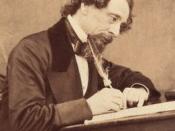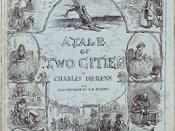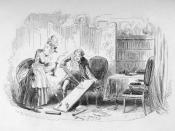Just like any era that has shaped a nation, England went through a series of social changes when entering the Victorian Era. Along with these social changes came a tide of secrecy especially in regards to the building of unions. When the poor finally decided to cooperate and stand up for themselves, they did so in the shadows. Charles Dickens portrays this in his novel A Tale Of Two Cities when the poor were forced to operate in secret to revolt against the French nobles. His characters, the three Jacques and Madame Defarge symbolized the need for secrecy during that time. The poor that brought about the French Revolution had to work covertly just like the poor in Victorian England.
The Victorian Era was a time of great industrial change. As the economy shifted from agriculture to industry, more and more people began working in factories. Children and women were forced to work long hours to support their families.
Working conditions in mills and textile factories were poor, and mistreatment was common, so were poor wages. Working in such a polluted and disease ridden environment, workers often became ill. As the rich grew richer and the poverty increased, peasants began to dislike their position. However, according to "Industrial Arbitration, Equity, and Authority in England, 1800-1850" by James A. Jaffe, the Combination Acts passed in 1824 made trade unions, public strikes, requests for shorter hours, and better wages illegal. Although these acts were repealed the next year, repression of trade unions continued. The people's only hope was to discuss their desired changes in secret.
In "A Tale of Two Cities", set in a time about a hundred years prior to the Victorian Era, Marie Antoinette, the queen at that time was ignorant and uncaring to the peasants causing an air of...


